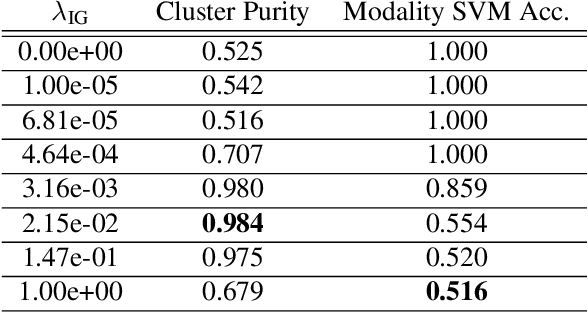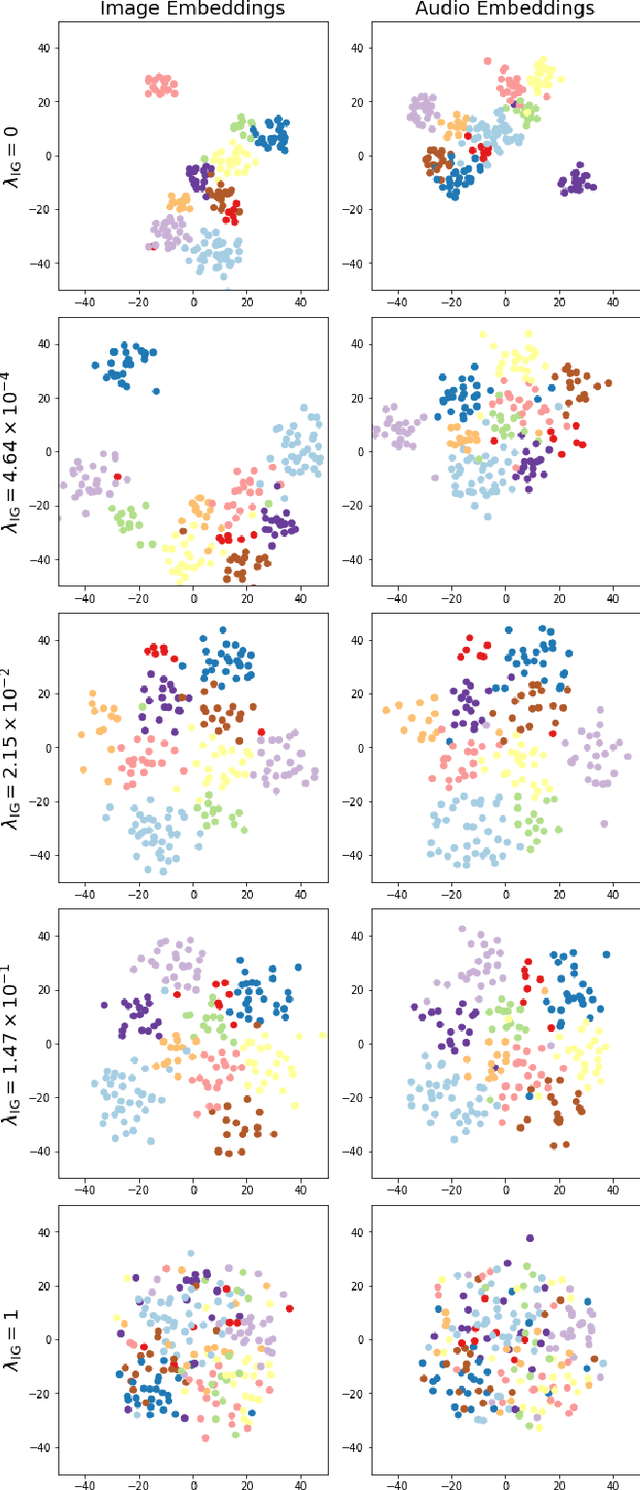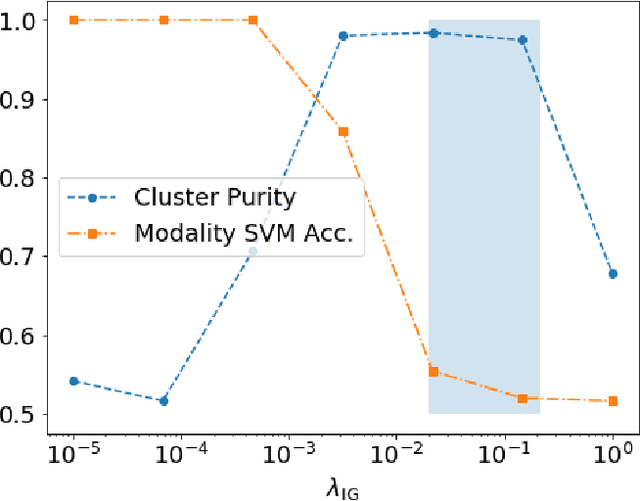Learning Modality-Invariant Representations for Speech and Images
Paper and Code
Dec 11, 2017



In this paper, we explore the unsupervised learning of a semantic embedding space for co-occurring sensory inputs. Specifically, we focus on the task of learning a semantic vector space for both spoken and handwritten digits using the TIDIGITs and MNIST datasets. Current techniques encode image and audio/textual inputs directly to semantic embeddings. In contrast, our technique maps an input to the mean and log variance vectors of a diagonal Gaussian from which sample semantic embeddings are drawn. In addition to encouraging semantic similarity between co-occurring inputs,our loss function includes a regularization term borrowed from variational autoencoders (VAEs) which drives the posterior distributions over embeddings to be unit Gaussian. We can use this regularization term to filter out modality information while preserving semantic information. We speculate this technique may be more broadly applicable to other areas of cross-modality/domain information retrieval and transfer learning.
 Add to Chrome
Add to Chrome Add to Firefox
Add to Firefox Add to Edge
Add to Edge